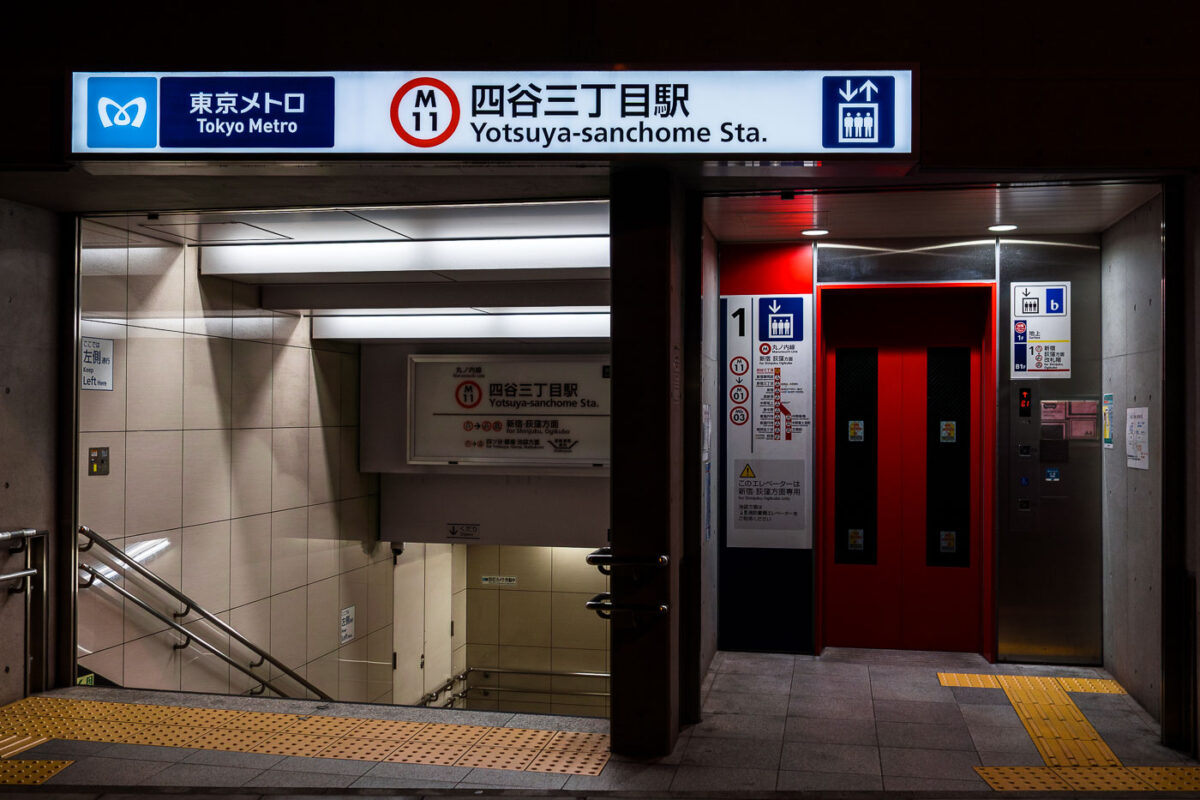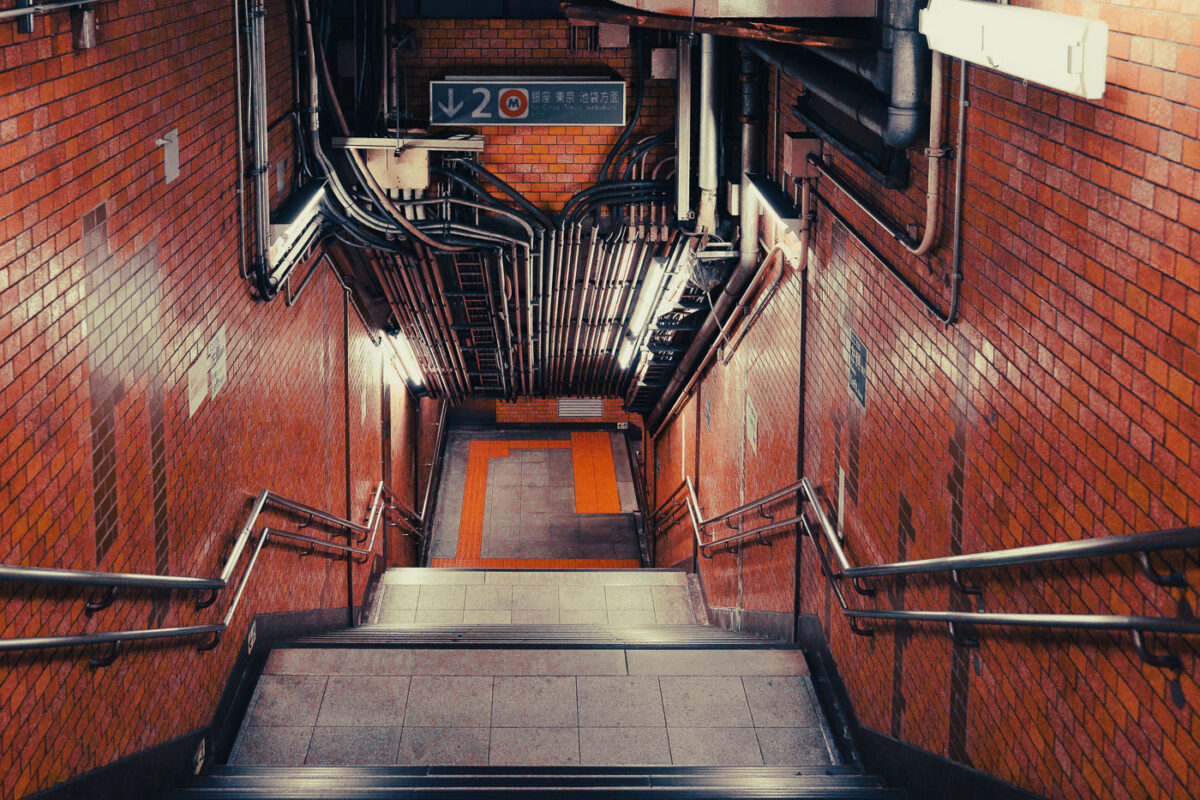A passageway leading down to the Tokyo Metro Marunouchi Line, part of one of Tokyo’s oldest surviving subway corridors. The Marunouchi Line began opening in stages between 1954 and 1962, making it the second-oldest subway line in the city after the Ginza Line. Many stations along the route—especially the early central segments—retain architectural and material choices from Japan’s postwar reconstruction period, including ceramic wall tile, exposed conduit, and compact stairways built before modern accessibility standards were introduced.
The dense overhead wiring found in older Marunouchi Line interchanges reflects decades of retrofits to accommodate improved lighting, ventilation, fire-suppression systems, and communication networks, all integrated into the original structural envelope. These spaces remain essential transfer points connecting central Tokyo’s commercial districts with major JR East hubs such as Shinjuku, Tokyo Station, and Ochanomizu.
Although the Marunouchi Line has undergone rolling upgrades—including new rolling stock (02 series replacements), platform screen doors, and improved wayfinding—the underlying layout in many stations still conveys the functional, space-efficient design philosophy of mid-20th-century Japanese subway engineering.


